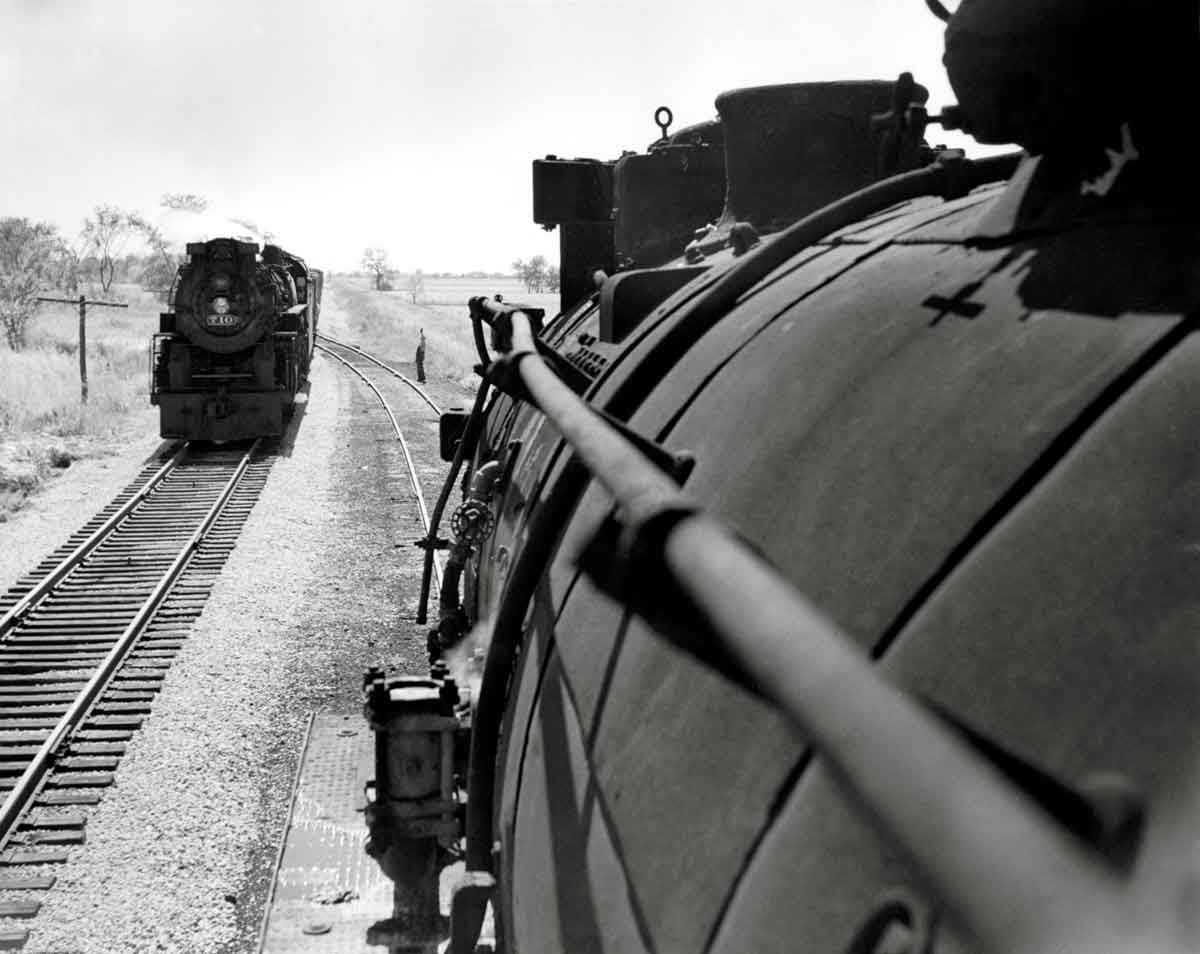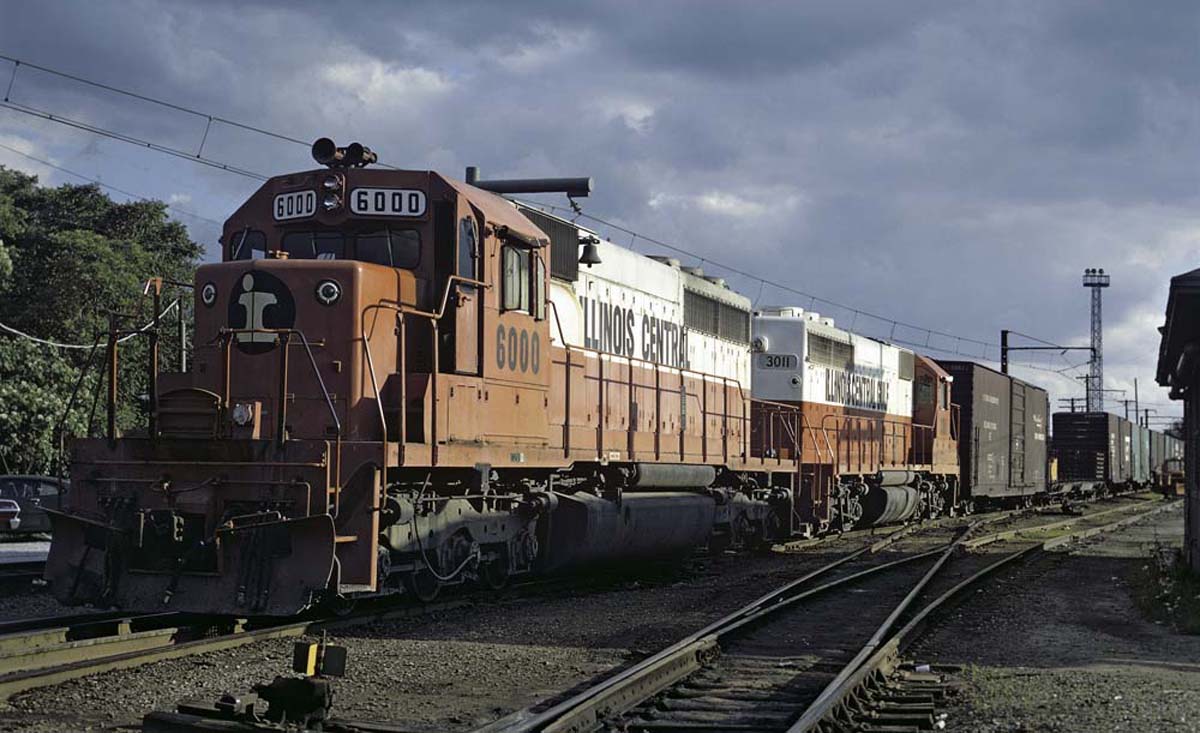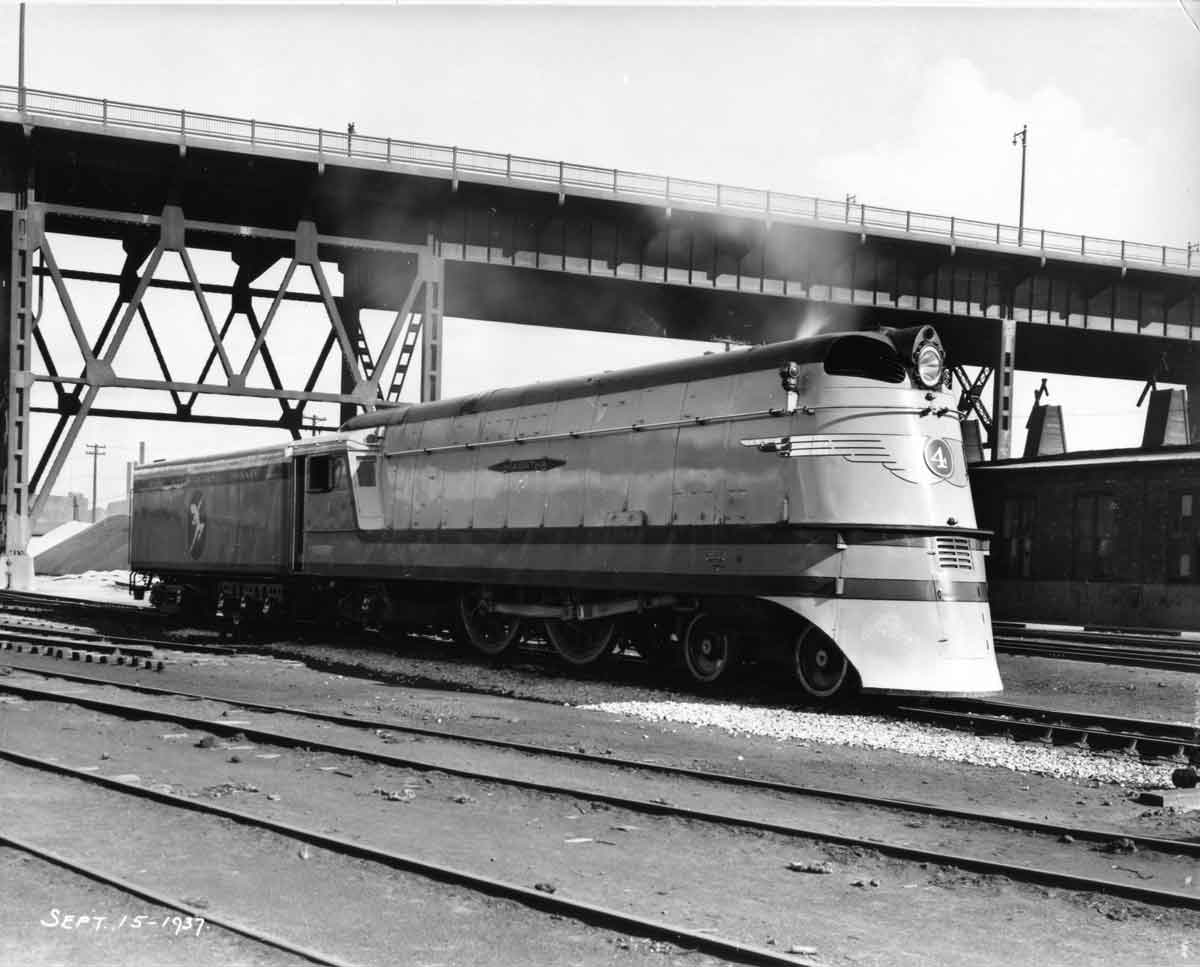The Train Master diesel locomotive holds a unique spot in history. At its introduction in 1953, it was simply a logical extension of Fairbanks-Morse’s locomotive line, yet the Beloit (Wis.) builder recognized that what Trains Editor David P Morgan termed the “fat, robust, gadget-packed 2,400 hp six-motor hood unit” could become something special. Which it did — the precursor of the highhorsepower hoods that redieselized North American railroads. The TM was the first model to straddle the fence between the first and second diesel generations.
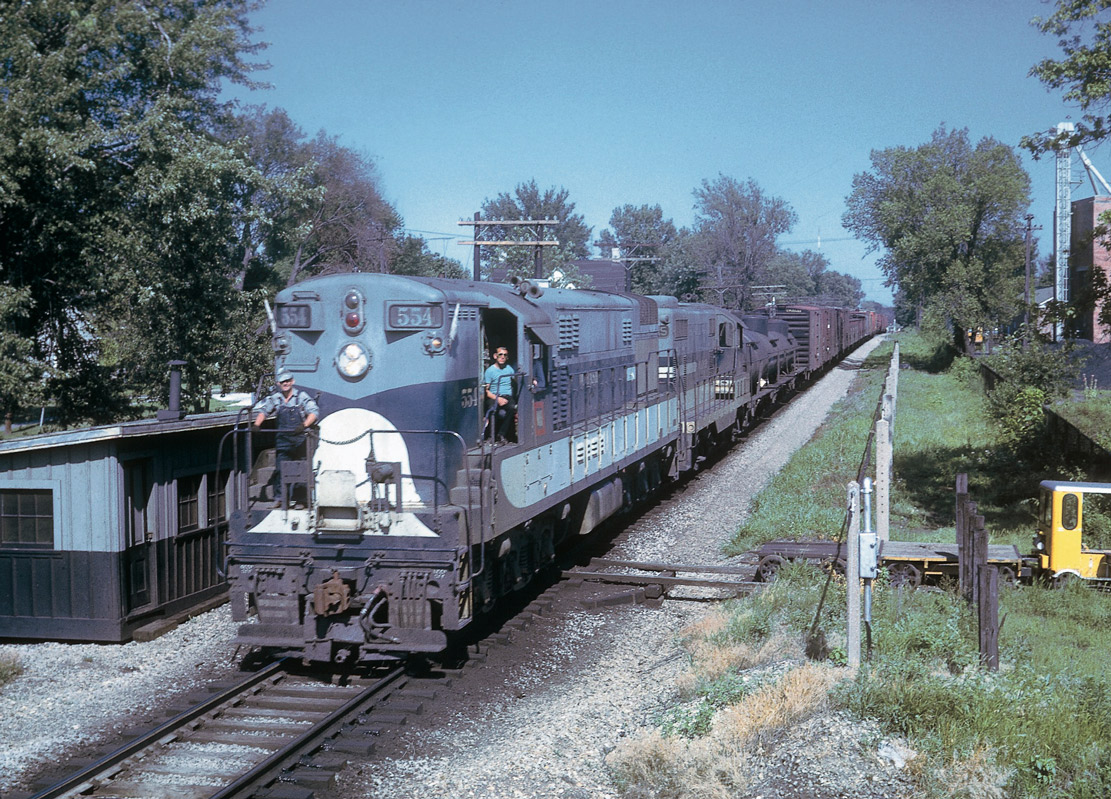
It was a product of two simultaneous sets of circumstances. Mechanical elements which became the TM were, with one exception, already present in FM’s line. The 12-cylinder, 2-cycle opposed-piston (OP) engine that developed 2,400 hp at 850 rpm had been offered as an option in the Consolidation Line of cab and booster units, and in 1952 and 1953, 22 2,400 hp C-Lines were built for Long Island, New Haven, and New York Central.
Despite the Train Master being “gadget-packed,” components such as main generators and optional equipment, including steam generators and dynamic brakes, all had been present in certain of earlier FM units. The major mechanical exception was the tri-mount truck developed for the TM. Like one used in Alco RSD types, FM’s s tri-mount employed a three-point loading principle which spread the load application along the entire length of the truck, steadied the frame, and reduced the reaction of the truck frame to irregularities in track.
The Train Master was also born of a lag in FM sales. The cabunit era was about over, and C-Lines weren’t selling well, so design progressed on a big road-switcher, the project of George Derrig, who worked under Hank “Mr. C-Line” Schmidt. The TM assumed the proportions of 1½ conventional 1,600 hp B-B models. Compared with even its own little H16-44 brother, the Train Master provided 50% more power, 50 to 90% more continuous rating, and half again as much weight on driving axles.
Given model H24-66 in FM language (hood, 2,400 hp, six motors, six axles — i.e., C-C trucks), the Train Master weighed in at a basic 187½ tons. It was available with any of four gear ratios, for maximum speeds of 66 to 79 mph, depending also on whether 40-inch or 42-inch wheels were utilized, and packed a starting tractive effort of 112,500 pounds and up to 79,500 pounds of continuous tractive effort. All this was in a unit 66 feet long; 10 feet, 4½ inches wide; and 15 feet high [see August 1973 Trains for an illustration]. To Morgan, TM was the “Mr. Big of road-switchers in tractive effort, dynamic braking, and steam-generator capacity.” (Rule No. 2: Do not confuse the genuine Train Master with the “Junior” or “Baby” versions, especially the final H16-66 whose carbody was virtually identical to the true Train Master. These 1,600 hp, six-motor “babies” numbered 58, on North Western (50), Milwaukee (six), and industrials Tennessee Valley Authority and Alcoa (one each). Also similar in looks are the later versions of FM’s H16-44, the four-motor 1,600 hp road-switcher.
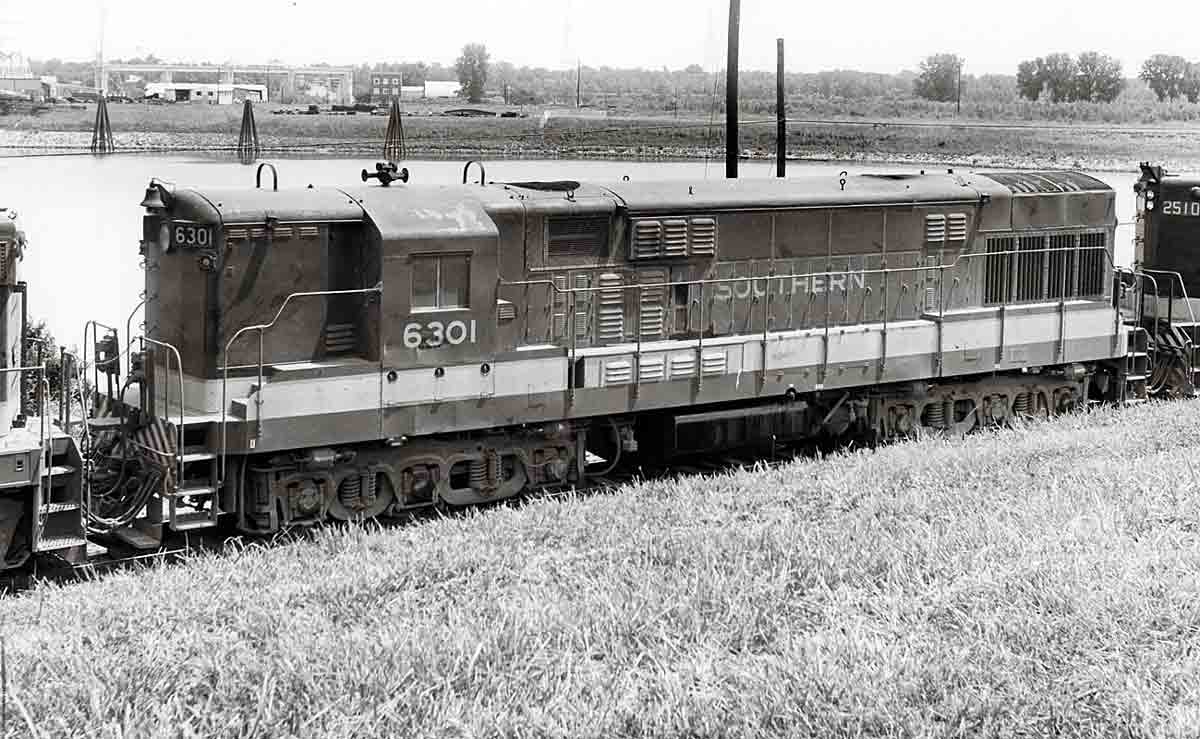
At least 20 Class I railroads, plus testbed Milwaukee Road, tried out the Train Master: In the East, they included Pennsy, DT&I, B&O, Western Maryland, Reading, NYC, New Haven, Virginian, Jersey Central, and Long Island. In the Midwest, the TM’s strutted on Rock Island, North Western, Missabe, Illinois Central, and Wabash, and in the West on UP, SP, Rio Grande, Santa Fe, and Great Northern. Six of the hosts later signed up, but Southern took FM at its word without testing, ordering five, and Lackawanna signed up for 10 at $250,000 each before TM-1 and TM-2 were even built.
The Train Master wound up selling only to eight U.S. railroads, though, plus the two Canadian transcons. The CN and CP units were built by FM licensee Canadian Locomotive Co. at Kingston, Ontario. FM’s big guy did prove itself, however, in a variety of services. The TMs were helpers on Pennsy and Reading, commuter haulers on Lackawanna, Jersey Central, and Southern Pacific, and freight maids of all work on Southern, Virginian, and Wabash.
Virginian’s 1954 batch of 19 turned out to be the largest single U.S. order, and it received the last TMs too, a repeat order for 6 in 1957. VGN’s fleet of 25 was the largest; Reading wound up with 17, SP 16, Jersey Central 13, Lackawanna 12, and Pennsy 9. Wabash bought demos TM-1 and TM-2, and SP got the other two.
Train Masters performed well, and spectacularly on occasion, in pairs, trios, and even foursomes on Lackawanna and successor Erie Lackawanna. SP kept its TMs purring in San Francisco commute service into the early 1970s, and Virginians likewise soldiered on for successor N&W in coal-mine country. N&W also inherited Wabash’s eight, but Wabash had had them re-engined by Alco just before the 1964 merger. All VGN and Wabash TMs were relettered N&W. In the late 1960s, one of Pennsy’s was renumbered into the Penn Central series, but none was relettered. And in perhaps the oddest Train Master footnote, two of EL’s wound up briefly on Mexico’s Chihuahua Pacific, a good FM customer.
Retirement for the big FMs came early enough that they missed the true diesel preservation movement, and only one Train Master is extant: Canadian Pacific 8905, one of the road’s 21, at the Canadian Railway Museum at Delson, Quebec. The last TMs in the U.S. to operate were on N&W in 1976 — Alco-engined 3594 in February and 173, former Virginian 73, on July 4. It was N&W’s intent that one would be donated to a museum, probably in Roanoke, but the unit got caught in an internal tangle and wound up joining many of the others in being converted to a road slug unit instead.






